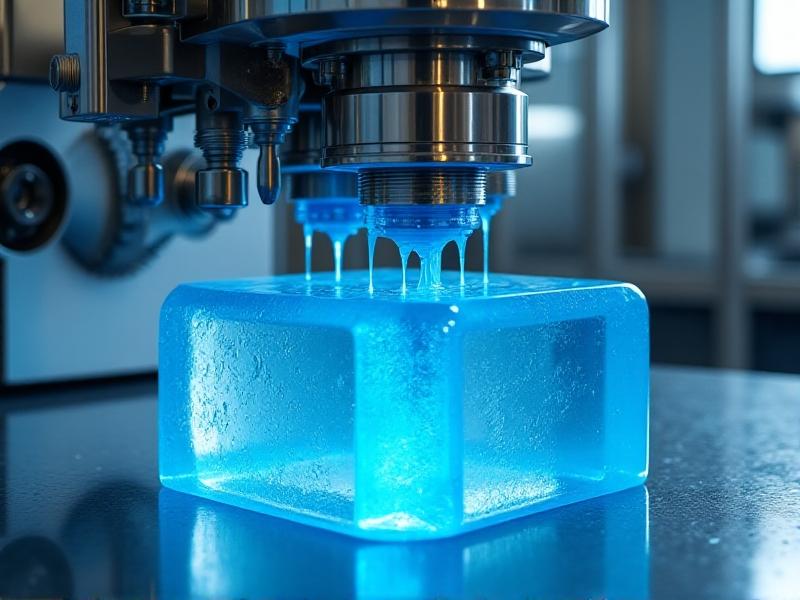Temperature-Controlled Transport for Delicate Ice Art
The Art of Ice: Why Temperature Control is Crucial
Ice art is a delicate and ephemeral form of creativity that demands precision and care. From intricate sculptures to grand installations, the beauty of ice art lies in its ability to captivate audiences with its transient nature. However, this very transience also makes it highly susceptible to environmental factors, particularly temperature. Even a slight deviation from the optimal temperature range can cause melting, cracking, or distortion, ruining the artist's vision.
Temperature-controlled transport is essential for preserving the integrity of ice art during transit. Whether it's a single sculpture or a large-scale installation, maintaining a consistent sub-zero environment ensures that the artwork arrives at its destination in pristine condition. This involves specialized refrigeration units, insulated containers, and meticulous monitoring systems to regulate temperature and humidity levels.
Moreover, the challenges of transporting ice art extend beyond temperature control. Factors such as vibration, handling, and exposure to external elements must also be managed to prevent damage. As the demand for ice art grows in events, exhibitions, and competitions worldwide, the need for reliable temperature-controlled transport solutions becomes increasingly critical.

The Science Behind Temperature-Controlled Transport
Transporting ice art is not just about keeping it cold; it's about understanding the science of temperature regulation. Ice begins to melt at 0°C (32°F), but the ideal temperature for preserving ice art is typically between -10°C and -15°C (14°F to 5°F). This range ensures that the ice remains solid while minimizing the risk of thermal shock, which can cause cracking or fracturing.
Modern temperature-controlled transport systems use advanced refrigeration technology to maintain these precise conditions. These systems are equipped with sensors and alarms to alert operators of any fluctuations, ensuring that the environment remains stable throughout the journey. Additionally, insulation materials such as polyurethane foam or vacuum panels are used to minimize heat transfer and maintain consistent temperatures.
Humidity control is another critical factor. High humidity can cause frost to form on the surface of the ice, obscuring its details and altering its appearance. Conversely, low humidity can lead to sublimation, where ice transitions directly from a solid to a gas, resulting in gradual loss of mass. Advanced transport systems address this by regulating humidity levels to prevent these issues.

Challenges in Transporting Delicate Ice Art
Transporting ice art presents unique challenges that require careful planning and execution. One of the primary concerns is vibration, which can cause micro-fractures in the ice, compromising its structural integrity. To mitigate this, transport vehicles are equipped with suspension systems designed to absorb shocks and vibrations, ensuring a smooth ride for the delicate cargo.
Handling is another critical aspect. Ice sculptures are often heavy and fragile, requiring specialized equipment and trained personnel to move them safely. Hydraulic lifts, cranes, and custom-designed carts are commonly used to transport large sculptures, while smaller pieces may be secured in padded containers to prevent movement during transit.
Exposure to external elements, such as sunlight or warm air, can also pose a threat. Transport vehicles are often fitted with UV-resistant windows and airlocks to minimize exposure. Additionally, routes are carefully planned to avoid delays and ensure that the ice art reaches its destination as quickly as possible.

Case Studies: Successful Ice Art Transport Projects
Several high-profile projects have demonstrated the effectiveness of temperature-controlled transport for ice art. One notable example is the transportation of a massive ice sculpture for the Winter Olympics. The sculpture, which depicted the Olympic rings, was transported over 500 miles in a custom-designed refrigerated truck. The journey required precise coordination to ensure that the sculpture arrived in perfect condition for the opening ceremony.
Another example is the Ice Hotel in Sweden, which features intricate ice sculptures and installations created by artists from around the world. Each year, these sculptures are transported to the hotel site using temperature-controlled vehicles and equipment. The success of this project highlights the importance of reliable transport solutions in preserving the artistry and beauty of ice sculptures.
These case studies underscore the critical role of temperature-controlled transport in the world of ice art. By leveraging advanced technology and meticulous planning, it is possible to overcome the challenges of transporting delicate ice sculptures and ensure that they captivate audiences for years to come.
Future Innovations in Temperature-Controlled Transport
As the demand for ice art continues to grow, so too does the need for innovative transport solutions. One promising development is the use of phase-change materials (PCMs) in refrigeration systems. These materials absorb and release thermal energy during phase transitions, providing a more efficient and stable cooling solution. PCMs can be integrated into transport containers to maintain consistent temperatures without relying on continuous power.
Another area of innovation is the use of autonomous vehicles for transporting ice art. These vehicles are equipped with advanced navigation systems and sensors to ensure safe and efficient transport. By reducing the need for human intervention, autonomous vehicles can minimize the risk of handling errors and improve overall reliability.
Additionally, advancements in insulation materials and refrigeration technology are expected to further enhance the efficiency of temperature-controlled transport. For example, aerogel insulation offers superior thermal performance in a lightweight and compact form, making it ideal for transporting delicate ice art.
Conclusion: Preserving the Beauty of Ice Art
Temperature-controlled transport plays a vital role in preserving the beauty and integrity of ice art. From advanced refrigeration systems to innovative handling techniques, every aspect of the transport process is designed to ensure that these delicate creations arrive at their destination in perfect condition. As technology continues to evolve, the future of ice art transport looks brighter than ever, promising new possibilities for artists and audiences alike.








